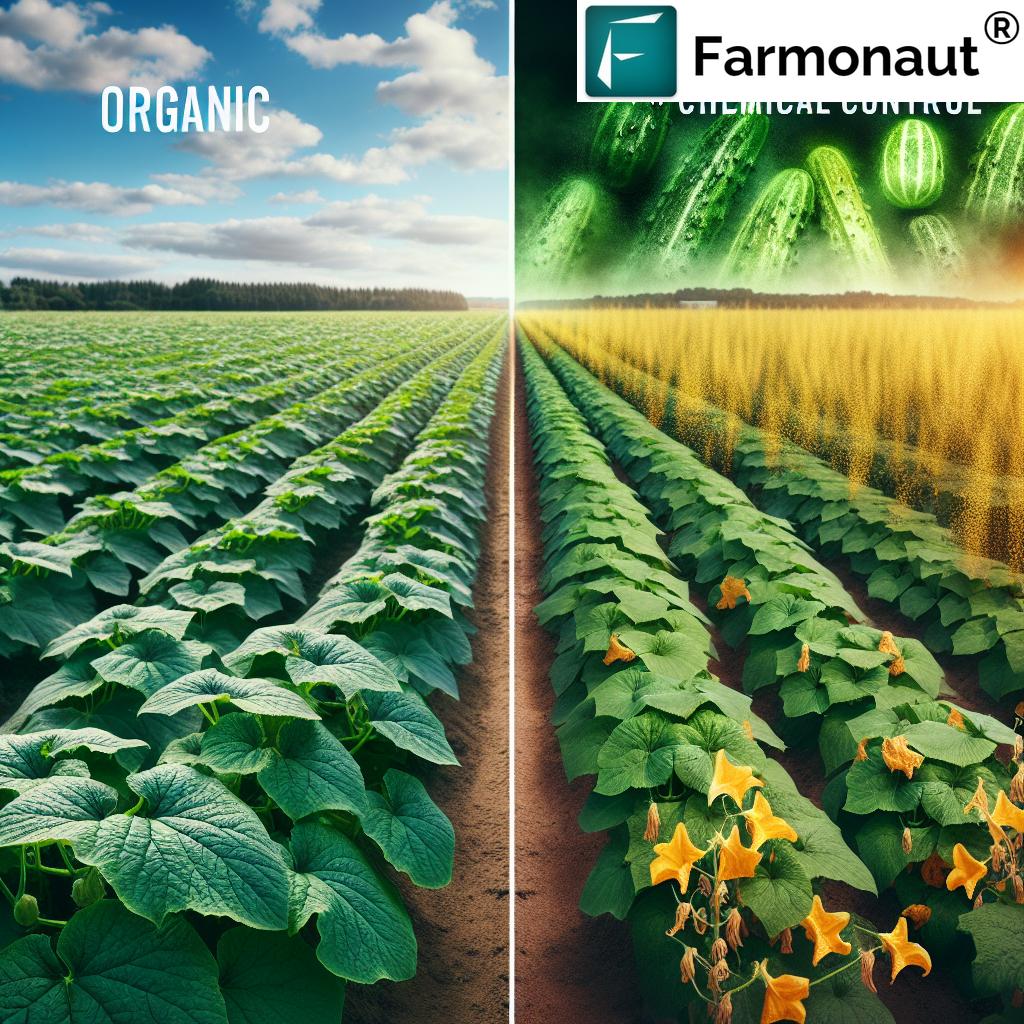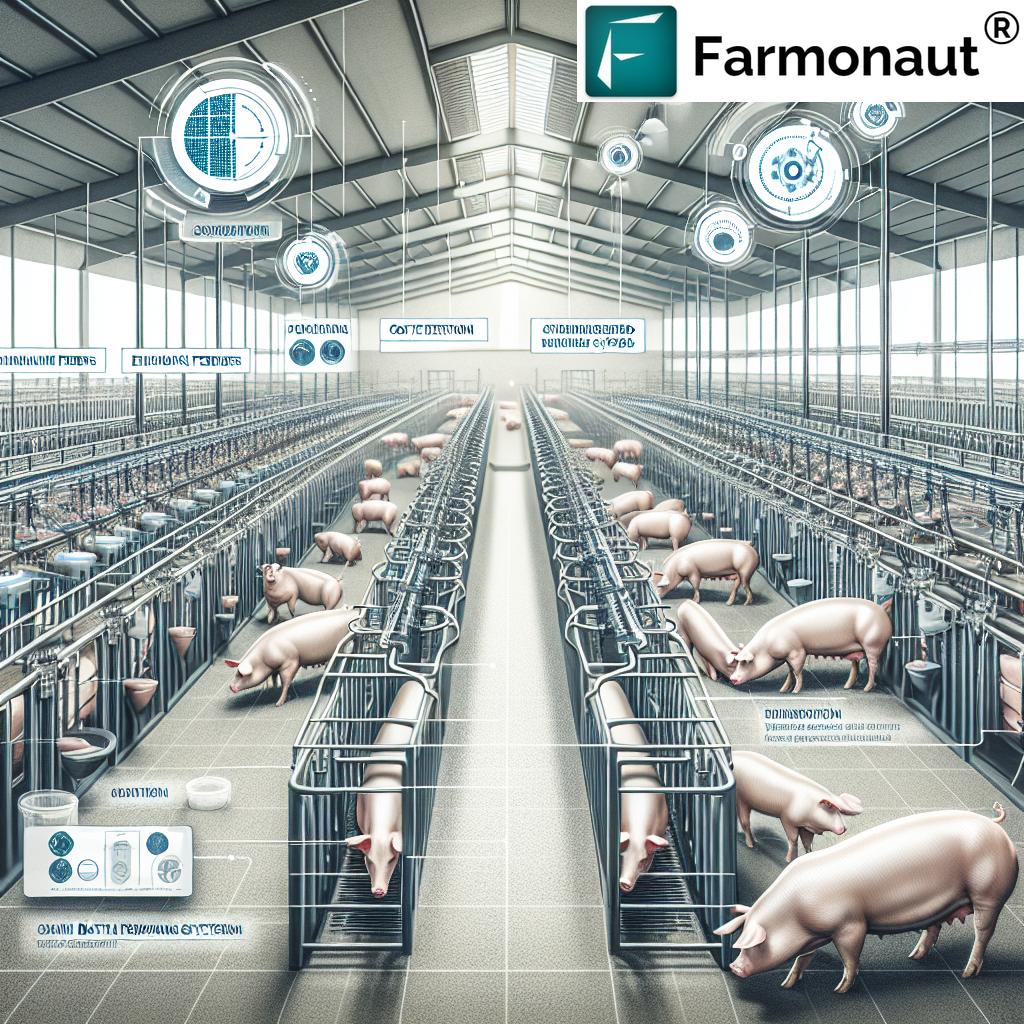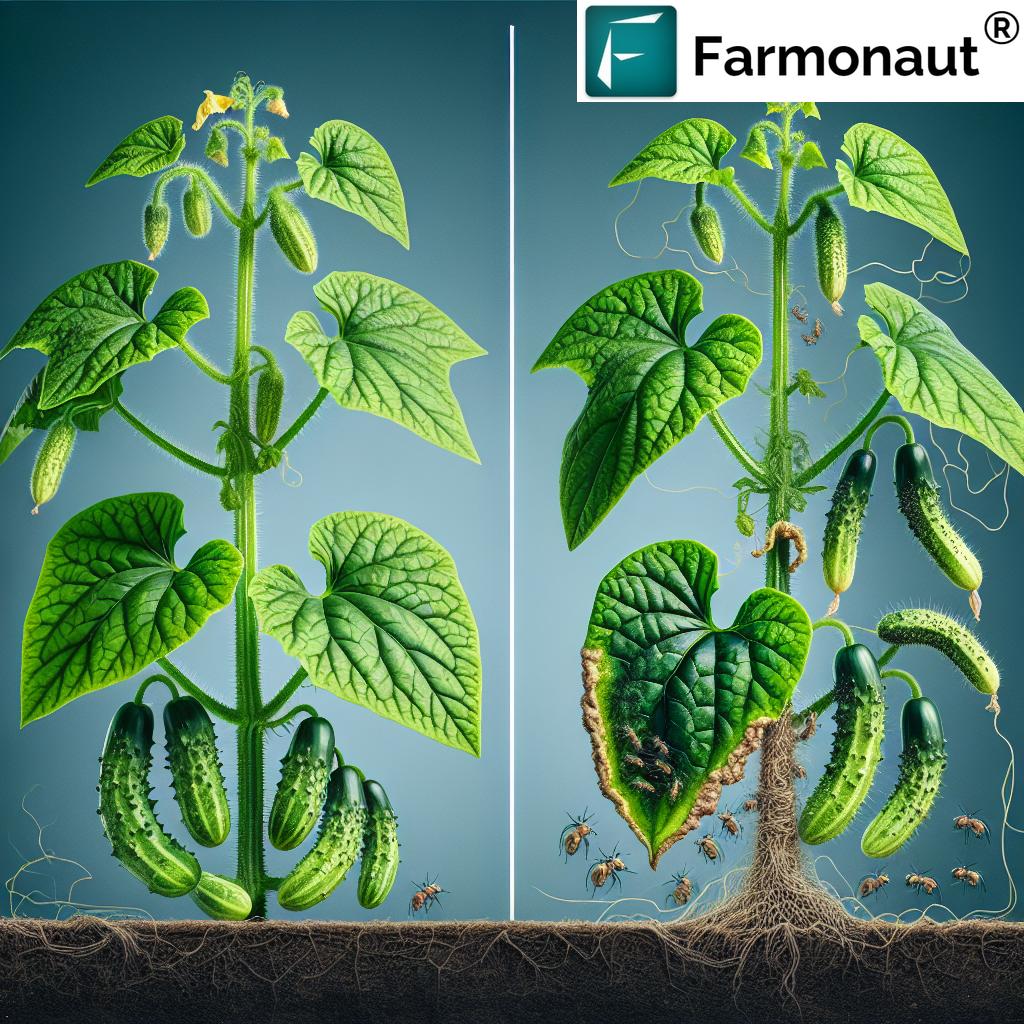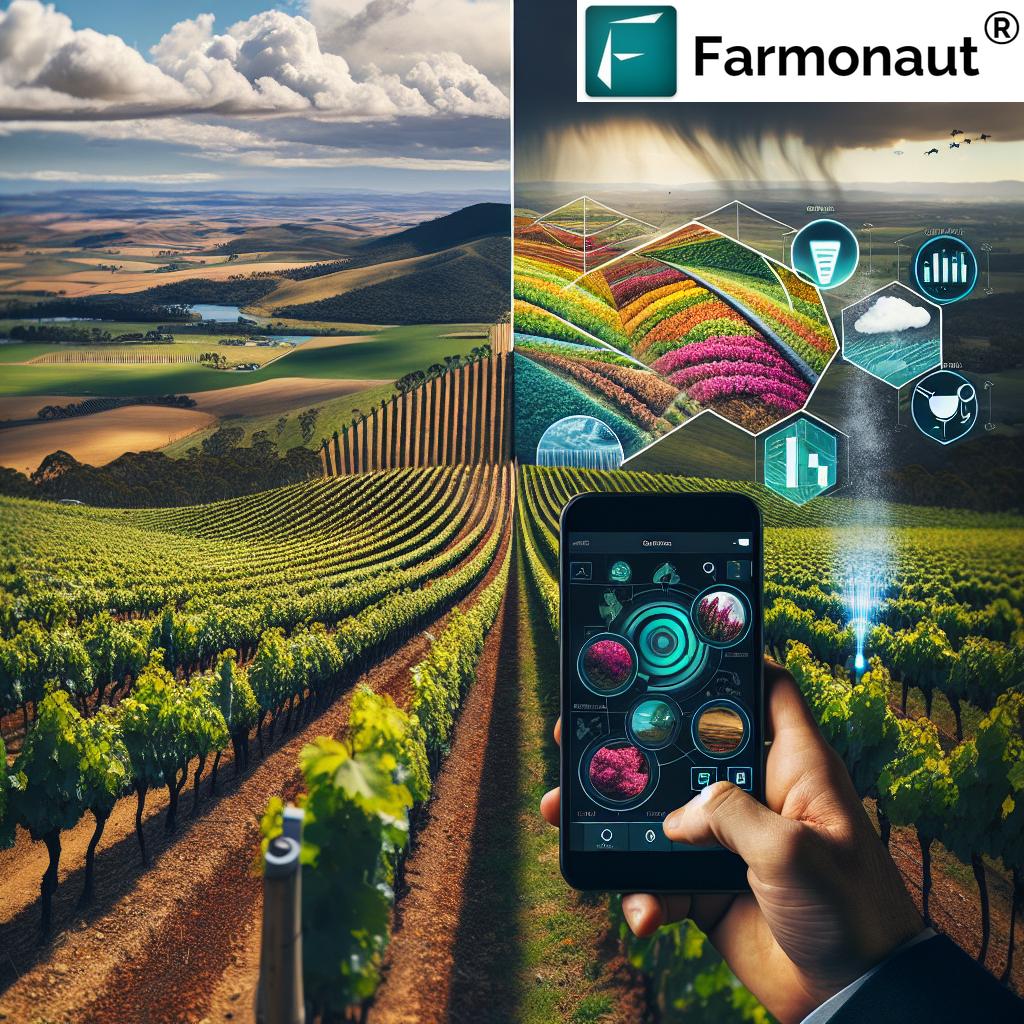Drone Technology in Agriculture: 7 Shocking Innovations
- Introduction: The Agricultural Drone Revolution
- Trivia: Drones Changing the Face of Farming
- 1. Precision Spraying & Variable Rate Application
- 2. Soil and Field Analysis with Drones
- 3. Drone Irrigation Management
- 4. Automated Planting and Seeding by UAVs
- 5. Livestock Monitoring via Advanced Drone Capabilities
- 6. Plant Disease Assessment: Early Detection with Drones
- 7. Regulatory Considerations for Agricultural Drone Integration
- Comparative Table: Key Drone Innovations in Agriculture
- Overcoming Challenges & The Future of Agriculture Drones
- Farmonaut: Making Precision Agriculture Global
- FAQ: Drones in Agriculture
- Conclusion: Transforming Modern Agriculture
“Over 7,000 agricultural drones were deployed globally in 2023, revolutionizing crop monitoring and management.”
Introduction: The Agricultural Drone Revolution
The agriculture industry has entered a new era—one where drones and unmanned aerial vehicles (UAVs) are revolutionizing everything from crop monitoring to resource management. As agricultural drone technology advances, the integration of these innovative systems is transforming traditional farming practices, driving significant improvements in efficiency, precision, and sustainability across a range of applications.
Today, the keywords aren’t just soil, seeds, or irrigation—now, they’re data, precision farming, and aerial monitoring. At Farmonaut, we believe that understanding these 7 shocking innovations in drone technology in agriculture is essential to thrive in the modern agricultural landscape. Let’s explore how drones in agriculture empower farmers to increase yields, reduce input costs, protect the environment, and ensure food security for the future.
1. Precision Spraying & Variable Rate Application: Drone Spraying Systems for Efficient Farming
Drone spraying systems are among the most game-changing agricultural innovations. These advanced UAVs deliver targeted applications of pesticides, herbicides, and fertilizers directly to crops, providing precise coverage that bulk ground-based methods cannot match.
How it Works:
- Advanced sensors analyze crop health, mapping areas that require specific chemical treatments.
- Variable rate application ensures each plant gets the exact amount needed, reducing chemical usage by 30–40%.
- Drones fly low and steady, reaching hard-to-access or waterlogged areas quickly and safely—no need for heavy tractors.
The result? Uniform coverage across diverse terrains, minimized environmental impact, and decreased operational costs for farmers. By limiting over-application, farms see economic gains while protecting soil health and nearby water sources from chemical runoff.
Ready to improve resource management? Our fleet management solutions can help monitor your spraying operations, track drone fleets, and optimize scheduling for large-scale applications.
“Drone spraying systems can cover up to 40 acres per hour, a 10x increase over traditional manual methods.”
2. Soil and Field Analysis: Drone Soil Analysis for Precision Farming
Understanding soil conditions is a fundamental aspect of precision agriculture. Drone soil analysis leverages multispectral and hyperspectral sensors to provide detailed insights into soil nutrient levels, moisture content, pH balance, and other factors. Accurate data enables farmers to:
- Optimize fertilization strategies (right place, right time, right quantity)
- Analyze 3D maps of farmlands for improved planning of planting patterns, irrigation systems, and field management
- Track changes in soil health over time, guiding regenerative farming practices
Drone-enabled field analysis produces cost-effective, actionable data much more rapidly than manual sampling. Integration with satellite-based monitoring platforms like Farmonaut amplifies these insights, helping farmers make informed decisions to boost yields and sustainability.
With capabilities for real-time crop monitoring, soil moisture tracking, and AI-powered advisory systems, Farmonaut brings precision agriculture features directly to your mobile device. Discover our large-scale farm management app for 24/7 access to vital data.
3. Drone Irrigation Management: Conserving Water & Enhancing Crop Yields
Efficient irrigation management is more crucial than ever—especially in drought-prone regions. Drone technology in agriculture now utilizes thermal and multispectral sensors to identify areas within fields requiring more or less water. With drone irrigation management, we can:
- Detect under-watered patches via heat signatures and vegetation analysis
- Plan irrigation system layouts using high-resolution maps
- Conserve water resources, reduce operational costs, and support environmental sustainability
Automated UAV monitoring improves both yield and resource conservation, which are vital for modern farming practices. Paired with satellite-driven crop health monitoring by Farmonaut, carbon footprinting becomes possible. Farmers can now measure and proactively reduce their environmental impact—key for sustainable agriculture.
4. Automated Planting and Seeding: Enhancing Crop Distribution
What if seeding wasn’t just about covering ground, but about uniform distribution, precision, and maximal yields? Automated drone planting systems use advanced flight planning and sensors to drop seeds at perfect intervals and depths. This technology offers:
- Even crop growth and stronger plants through precise seed spacing and deployment
- Minimal seed waste, reducing costs per acre
- Ability to plant in terrains difficult or impossible to cultivate with traditional machinery (steep slopes, marshy fields)
These innovative solutions support reforestation, cover cropping, and introducing new crops efficiently across diverse areas.
Farmonaut’s crop plantation and forest advisory services further complement automated seeding, ensuring optimal growth and land utilization based on real-time analysis and AI-powered insights.
5. Livestock Monitoring: Drones Enhance Herd Health & Management
Grazing animals over vast rangelands is resource-intensive and laborious. Drones in agriculture now come equipped with high-resolution cameras, thermal imaging, and smart tracking algorithms—allowing us to:
- Pinpoint livestock locations, even in rugged or remote areas
- Monitor animal health and quickly identify distress or illness (e.g., a cow separated from its group or non-grazing behavior)
- Conduct accurate herd counts and keep real-time digital inventories
These capabilities reduce herd monitoring time by up to 70%, freeing up human resources and reducing risks for both animals and staff. Integration with blockchain-based traceability (Farmonaut’s solution) ensures transparent, secure, and moodernized livestock-to-market records.
6. Plant Disease Assessment: Early & Accurate Detection with UAVs
How can we stop crop diseases before they devastate our yield? This is where drones in agriculture shine, using multispectral, visible, and infrared sensors to identify disease symptoms often before visible signs appear to the human eye.
- Spot early-stage infections, including fungal and bacterial diseases
- Apply targeted corrective actions only where needed (avoiding unnecessary broad-spectrum spraying)
- Minimize crop loss by containing outbreaks swiftly
The combination of AI-powered crop health assessment, drone-collected imagery, and satellite-based monitoring available through applications like Farmonaut empowers farmers with real-time, actionable disease intelligence, helping make data-driven decisions that mitigate risks and protect yields.
Farmonaut also supports crop loan and insurance verification with satellite-based monitoring, making financial protection more accessible and reliable for farmers affected by disease outbreaks.
7. Regulatory Considerations: Navigating Agricultural Drone Regulations
With the rapid deployment of drones in agriculture, regulatory bodies worldwide have crafted rules to ensure safe and secure integration of UAV operations into the farming landscape. In the United States, the Federal Aviation Administration (FAA) requires:
- Operator certification through a knowledge exam
- Commercial registration of all agricultural UAVs
- Operational compliance—such as flying below 400 feet, avoiding restricted areas, and line-of-sight requirements (with limited exceptions)
Other regions have their own agricultural drone regulations—and with data security becoming a global concern, lawmakers (notably in the US) are considering further restrictions on drones manufactured by foreign companies targeting the American agriculture sector. The aim is to manage potential risks associated with data collection, privacy, and national security.
As the regulatory landscape evolves, Farmonaut’s web and API platforms are engineered with compliance and data privacy in mind. You can safely conduct satellite-based monitoring, field mapping, and fleet tracking while adhering to legal guidelines.
Farmonaut API Access |
API Developer Documentation
Comparative Table of Key Drone Innovations in Agriculture
| Innovation Name | Primary Function | Estimated Efficiency Improvement (%) | Sustainability Impact | Real-world Application Example |
|---|---|---|---|---|
| Precision Spraying & Variable Rate Application | Targeted application of inputs via drones | 30–40% | Reduces chemical usage, minimizes runoff | Drones spray only infected areas in a field |
| Soil and Field Analysis | Soil nutrient, moisture, and 3D mapping | 20–30% | Optimizes fertilizer and water usage, improves yields | Multispectral drone flights for field planning |
| Drone Irrigation Management | Detecting water stress and optimizing irrigation | 25–35% | Conserves water, reduces waste | Thermal drones mapping dry zones |
| Automated Planting and Seeding | Drone-based seed distribution | 20–25% | Reduces seed wastage, promotes even growth | UAVs planting cover crops in hard-to-reach areas |
| Livestock Monitoring | Aerial tracking and health assessment of herds | Up to 70% | Improves animal welfare, reduces labor needs | Thermal drones counting cattle in rangelands |
| Plant Disease Assessment | Early detection of diseases via sensors | 15–20% | Prevents large-scale crop loss | Infrared UAV imaging for rust infection |
| Regulatory Compliance & Data Security | Ensuring safe drone operations and secure data use | N/A (enabler) | Reduces legal risk, builds stakeholder trust | FAA-compliant drone monitoring |
Overcoming Challenges & The Future of Drone Technology in Agriculture
While the benefits of drone technology in agriculture are clear, the journey is not without its challenges. Key roadblocks include:
- High initial investment costs—though prices are dropping, advanced UAVs, sensors, and analytics are still out of reach for some farmers.
- Technical complexity—proper training is required to operate, maintain, and interpret drone data effectively.
- Regulatory hurdles, particularly around cross-border data transfer and use of drones from foreign vendors.
- Security concerns—data integrity, protection from cyber threats, and need for transparent, tamper-proof supply chains.
Despite these obstacles, the future for drones in agriculture is bright:
- Emerging solutions—like autonomous helicopters for crop spraying and fully autonomous crop dusting platforms—promise to push boundaries even further.
- Cloud computing and AI integration are making drone-generated insights more accessible—even to those without technical expertise.
- Research and development aim to enhance drone autonomy and agile decision-making for precision farming.
This rapid adoption will support not only increased efficiency, but also sustainability—using less water, fewer chemicals, and minimizing carbon footprints for a greener agricultural sector.
For the latest global policy reactions, keep track of issues such as lawmakers’ concerns over agricultural drone security and regulatory risks.
Farmonaut: Making Precision Agriculture Global & Accessible
At Farmonaut, our mission is to democratize access to precision agriculture by fusing AI, blockchain, and satellite technology—delivering cost-effective solutions for farmers, agribusinesses, and policymakers worldwide. While not a drone manufacturer or input supplier, Farmonaut’s platform adds unique value:
- Real-time crop health monitoring: From disease detection to NDVI-based vegetation analysis—all via our intuitive Android/iOS/web apps and browser dashboard.
- AI-based Jeevn Advisory: Actionable crop management tips based on direct analysis of field and environmental data.
- Blockchain-based Traceability: End-to-end product journey tracking to guarantee authenticity and food safety in agricultural supply chains.
- Fleet and Resource Management: Optimize logistics for both farm machinery and drone fleets for large-scale and precision applications.
- Environmental Compliance: Monitor and reduce carbon emissions for sustainable farming and regulatory adherence.
- Scalability for all stakeholders: Whether smallholder or corporate, instant access to critical analytics and reports.
We offer flexible subscription models and open APIs, enabling seamless integration for third-party tools, government programs, and financial institutions. Our technology breaks down entry barriers, equipping rural and urban farmers with the same high-end data insights previously limited to industrial-scale operations.
FAQ: Drones in Agriculture
Q1: How do drones improve precision farming?
Drones enable accurate mapping, targeted input application, and real-time crop monitoring, allowing for site-specific interventions that reduce waste, lower costs, and maximize yields. By using multispectral and thermal sensors, they provide vital data on plant health, water stress, and pest outbreaks—helping farmers act before problems spread.
Q2: What makes drone spraying superior to manual spraying?
Drone spraying systems offer consistent, even coverage across fields, reducing chemical usage by up to 40% and reaching spots inaccessible to tractors or laborers. UAVs also minimize soil compaction and operator exposure to chemicals, enhancing both productivity and worker safety.
Q3: Are there regulations for flying drones in agriculture?
Yes, most countries—including the USA—have established regulations for agricultural drones. These rules address pilot certification, drone registration, operational limits, and data security requirements to ensure safe and legal drone use on farms.
Q4: How does Farmonaut support data-driven farming?
Farmonaut’s platform integrates satellite imagery, AI-powered advisory, and blockchain traceability, delivering actionable insights for crop health, resource allocation, and compliance right from your smartphone or browser. This empowers farmers to make informed, data-driven decisions for sustainable agriculture.
Q5: Can drones help reduce agriculture’s environmental impact?
Absolutely! Drones enable precise input application, monitor carbon footprints, and optimize resources, making it possible to produce more with less—thereby significantly reducing agriculture’s environmental footprint. Farmonaut’s carbon footprint tracking tools complement these efforts.
Q6: Can I integrate drone data with other farm management platforms?
Yes. Using Farmonaut’s open APIs, developers and agribusinesses can directly integrate remote monitoring, crop health, and weather analytics into their custom software applications, enhancing overall farm management capabilities.
Conclusion: Transforming Modern Agriculture with Drones
From precision spraying to field analysis, drone technology in agriculture is reshaping the sector. These seven shocking innovations demonstrate that UAVs and advanced remote sensors are not just futuristic; they are an indispensable part of sustainable, data-driven, and efficient farming practices today.
By combining the power of drones, satellites, AI, and blockchain through platforms like Farmonaut, we can unlock the agricultural potential needed for a rapidly growing global population—while preserving vital resources for future generations. Whether you are a smallholder, a corporate agribusiness, or a policymaker, now is the time to embrace drone integration in agriculture for a smarter, more resilient farming future.
Empower your farm. Transform with precision. Experience the Farmonaut platform on web, Android, or iOS.













